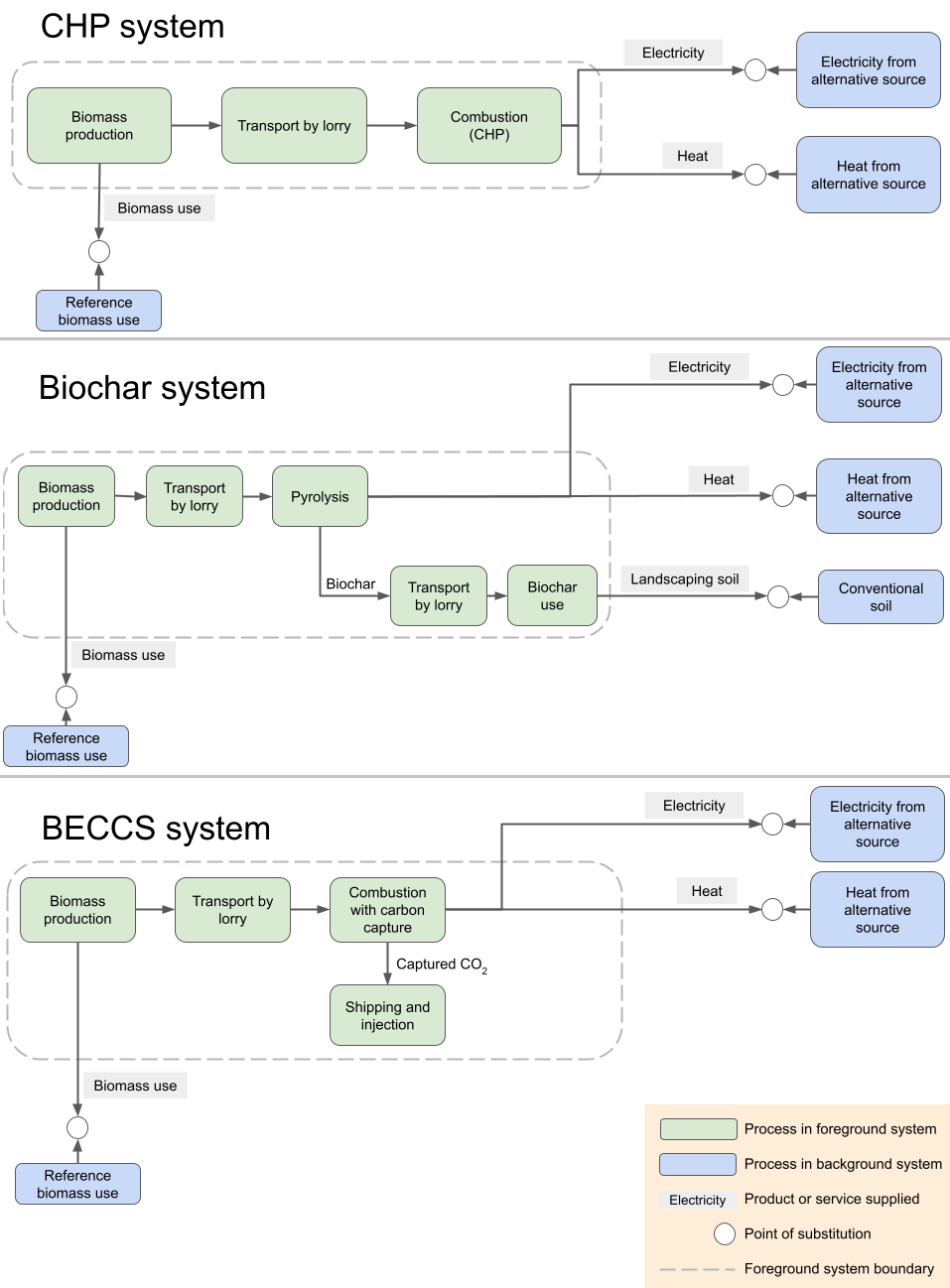
Research highlights
- A comparative, parameterized LCA was conducted to calculate the climate impact for two CDR bioenergy systems (Biochar and BECCS) and one reference CHP system.
- The LCA was conducted for four different functional units: heat, electricity, biomass use, and, for the CDR systems only, CO2-sequestration.
- The results show that the CDR systems had a lower climate impact than the CDR system in the majority of the scenarios considered, for all functional units. Comparing the two CDR systems, the preferable system changes depending on the functional unit.
- In order to solve the allocation issues of the multifunctional systems, the substitution method (often called system expansion) was applied to account for avoided burdens. The choice of energy substitution contributed to the majority of the variation in the results, both for the individual systems, and how they performed with respect to each other.
Want to read more?
Abstract
Purpose
Bioenergy with carbon dioxide removal (CDR) is increasingly proposed as an efficient way to mitigate climate change. This study examined the circumstances and methodological choices in which two CDR bioenergy systems were preferable to a reference bioenergy system from a climate change mitigation perspective. The CDR systems were also compared.
Methods
Three systems were modelled: two CDR systems (Biochar, bioenergy with carbon capture and storage (BECCS)), with a combined heat and power (CHP) system as reference. A parameterised life cycle inventory (LCI) model was developed and computed for all systems and four different functional units (FUs), resulting in different distributions of climate impacts. Contribution analysis was performed, followed by pair-wise comparison of all scenarios to establish their ranking. First-order Sobol indices were computed to assess the contribution of each parameter to total variance. When ranking of scenarios was strongly dependent on parameter values, decision tree analysis was applied.
Results and discussion
The CDR systems had a lower climate impact than CHP in most computations, across all FUs. On comparing the two CDR systems, the preferable system changed with FU. With heat or carbon sequestration as FU the Biochar system was preferable in general, while with electricity or biomass use as FU, the BECCS system had the lowest climate impact in most computations. For most system configurations, energy substitutions had a large influence and contributed most to the variance in results. The system ranking also depended on the reference activities in the background energy system.
Conclusions
The Biochar and BECCS systems were generally preferable to the reference CHP system from a climate mitigation perspective, particularly when the reference energy systems had a relatively low climate impact. However, FU and parameters affected the system ranking. For comparing BECCS and biochar, case-specific climate impacts will be decisive, but not always conclusive, as the choice of FU has such large impact on the results.
Recommendations
When conducting LCA of multi-functional systems, the use of several FUs, parameterised LCI, and contribution analysis allows for deeper investigation than conventional sensitivity analyses. When analysing the climate impact of bioenergy with or without carbon removal, it is especially important to perform sensitivity analysis on the energy background system, since it strongly affects the results.
Reference
Zakrisson, L, Azzi ES, Sundberg C (2023) Climate impact of bioenergy with or without carbon dioxide removal: influence of functional unit and parameter variability. DOI: 10.1007/s11367-023-02144-2
Contact: lisa.zakrisson@slu.se